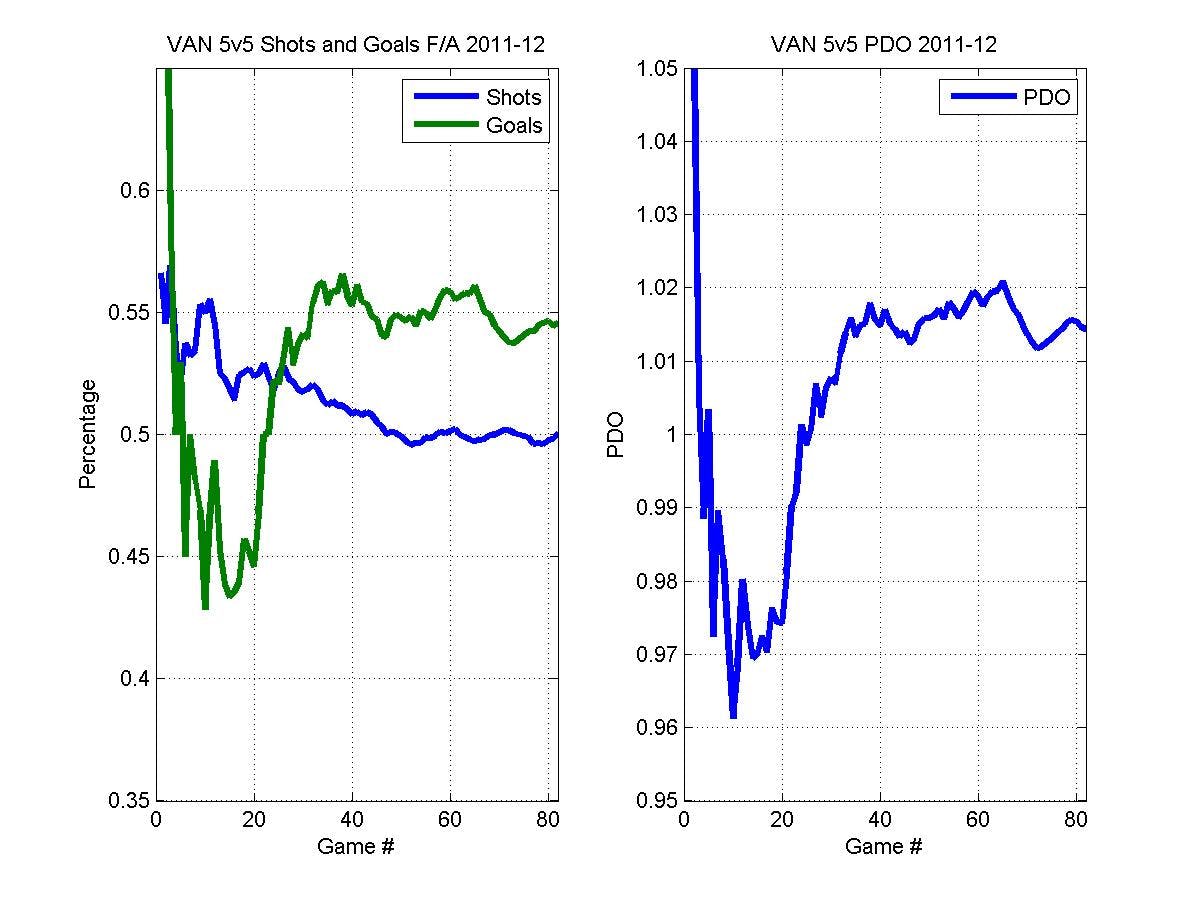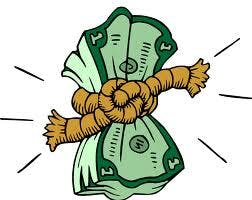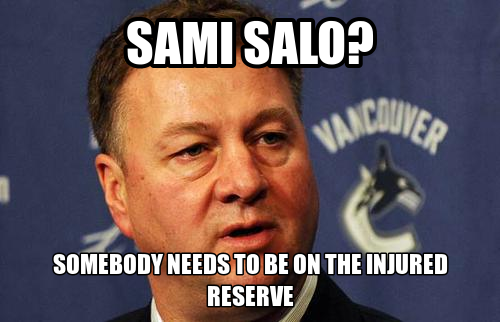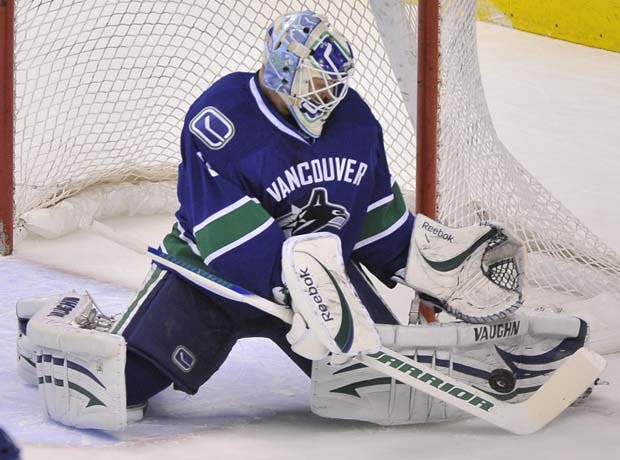Vancouver Canucks 2012-13 Annual: All the President’s Men
Can the Canucks go back-to-back-to-back? (And then get eliminated in the first round again?)
Partly because they play in such a thoroughly woeful division, the Canucks managed to repeat as President’s Trophy winners last season. But their first round playoff exit, in five games at the hands of the eventual Stanley Cup Champions, marred the 2011-12 campaign as a "failure."
Being at the absolute top of the table is a testament to the quality and consistency of the roster, but regular season dominance simply isn’t the goal for this club, or their management team.
Sure the Canucks accumulated more points than any other NHL club during the 2011-12 campaign, but I think you’d be hard pressed to find an analyst who would argue in good faith that they were the leagues "best" team last season. In fact, one of Vancouver’s dirty little secrets, was that the team wasn’t all that good in the second half of their schedule.
The Canucks consistently outscored their opponents down the stretch, but they did so by becoming the Minnesota Wild lite: they stopped out-shooting their opponents, their "Fenwick Close" cratered, and they were absurdly reliant on the unsustainably good goaltending they recieved from both Roberto Luongo and incumbent starter Cory Schneider. The numbers, as they say, ain’t pretty:

General Manager Mike Gillis blamed the team’s lethargic second half on the emotional pitch of the club’s mid-January day game against the Boston Bruins in his season ending press conference, but I’ve argued that the club’s lack of a fourth top-four defenseman was the bigger issue.
It became evident through the course of the season that stalwart veteran defender Sami Salo had lost a step (or two), which, put an awful lot of pressure on the likes of Kevin Bieksa, Dan Hamhuis and Alex Edler. Kevin Bieksa and Dan Hamhuis remain two of the best defensive players in the league, but Alex Edler’s inability to excel in "tough minutes" was exposed.
While questions remain about whether or not he can effectively transition to playing the right-side, it looks like the Canucks did pretty well to address their most pressing need (another top-four defenseman) by adding Jason Garrison on a reasonable deal in free-agency. On the other hand the club has done nothing to meaningfully address the need for a third-line centre and another top-six winger this offseason. They’ve also yet to attract a suitable offer for the services of Roberto Luongo…
Superficially it appears that the Canucks "stood pat" for the most part this summer, but beneath the surface several subtle upheavels are evident: the club is younger, they’ve got a new designated starter in goal, and there’s an under-the-radar cohort of young players who should challenge for significant playing time this upcoming season.
Forwards
It’s been remarked on at length previously, but Vancouver’s head coach Alain Vigneault deploys Vancouver’s forward group in an extraordinarily unconventional way. Just look at Vancouver’s zone start deployment against the rest of the league’s:

Basically, Alain Vigneault has Adam Smith’d his forward group, and has specialized them to a previously unseen degree. The first line (the Sedin twins, and usually Alex Burrows) is an offensive-zone specialist group, meanwhile the fourth line (Malhotra, Lapierre and Dale Weise) are defensive specialists. Literally the fourth line’s job is to win defensive zone draws, flip the puck up ice and quickly change, which is why all three players were in the bottom 10 in terms of average shift times in the league last season. The second and third lines are "two-way" lines, although, with an important caveat (we’ll come back to this in a moment)…
Vigneault is obsessive when it comes to massaging on-ice matchups, and unlike most other bench bosses, he doesn’t prefer to play "strength on strength". Rather, he prefers to play his third-line against the opposition’s top forward group, which, theoretically, frees up Ryan Kesler to manhandle the bottom-six forward groups on the opposition’s roster. Or as Tyler Dellow put it, Vigneault apparently likes to attack the "soft underbelly" of opponent’s rosters.
Last season however, after Manny Malhotra "lost his job" to Cody Hodgson, Ryan Kesler was counted on to pay more defense oriented minutes and, unsurprisingly, his offensive production fell off. Also, Vigneault’s zone-start deployment patterns, which were already extreme, became even more so. This is partly because the club just wasn’t as good a possession team as they were the season previous, so Vigneault had to be even more disciplined with his specialized units to get the Sedins the same number of offensive zone-starts…
To the caveat: the Canucks had an odd deployment sideshow that lasted for a third of last season, we tend to refer to it as "the Hodgson showcase." The Hodgson showcase lasted for 25 games from late December through to the NHL trade deadline (when Hodgson was sent to Buffalo, along with Alexander Sulzer in exchange for Zack Kassian and Marc-Andre Gragnani). During this third of the season, the Canucks gave two of their forward lines the 80% o-zone start treatment, and while they racked up the wins, the team’s underlying numbers during this stretch were brutal.

Going into next season, I expect that Vancouver’s zone-start deployment patterns will regress to the mean somewhat, especially on the low-end. That is unless the management team decides to showcase likely short-term Kesler replacement Jordan Schroeder…
Up front the Canucks are one of the deepest clubs in the league. The Sedin twins had their least productive season in several years, but they remain offensive forces to be reckoned with and are super-elite with the man-advantage. Ryan Kesler will be injured until at least December but he remains one of the games best two-way players. Perception aside, Kesler’s counting numbers regression last season was completely predictable, and even then it was driven primarily by his health, his low on-ice shooting percentage, and the defensive orientation of his usage. Alex Burrows probably isn’t a a regular 25 goal scorer without the Sedins, but he’s more than just a caddy.
David Booth underwhelmed Canucks fans in his debut season with the team, but he scored goals at a pretty efficient clip at even-strength, and posted some spectacular underlying numbers. His bull in a china shop stylings might make him an on-ice shooting percentage outlier, however. Mason Raymond battled back from the fractured vertebrae he suffered during the 2010-11 Stanley Cup Finals, but he just wasn’t the same. Jannik Hansen and Chris Higgins were extraordinarily effective defensive specialists who both had career years offensively as well.
Vancouver’s fourth liners are tough to evaluate because of the way Vigneault mercilessly threw them to the dogs, but they did well to contribute despite impossible circumstances. Jordan Schroeder and Zack Kassian are the big questions marks, but it’s possible that they’ll be counted on to play big roles on next years team. The Canucks seem pretty confident about their ability to "design success" for young players by sheltering their minutes, so perhaps Kassian and Schroeder will get the "kid-line" treatment.
At the margins, the club’s centremen were in the top-3 in faceoff percentage, and both the penalty-kill and power-play units were very effective. The Canucks will probably add a guy like Jason Arnott before the season begins to further bolster their forward depth, but even if they don’t, they have one of the deepest and most versatile groups in the league.
Defense

In 2010-11, Vancouver’s blueliners were specialized along similar lines as the forwards were. With the loss of offensive defenseman Christian Ehrhoff, however, Alain Vigneault deployed his defenders in a more traditional fashion last season. Kevin Bieksa and Dan Hamhuis are a top-5 "shut down pairing" in the league, and will be counted on again to drive possession against the toughest opponents.
Alex Edler is the big question mark. He’s got all of the tools: the size, the speed, the shot, the playmaking ability and even the dangles to be an elite defenseman. When he’s "on," he is borderline dominant, which is what makes it so puzzling when he turns in a series of enigmatic performances, marked with unforced errors and brain dead turnovers. He’s not the most reliable defensive player, but he’s still young and anyway his offensive skillset and power-play production is very valuable.
Jason Garrison has put in two quality professional seasons, but the Vancouver limelight will be his biggest test yet. Indications from the Canucks are that he’ll be given a shot on Alex Edler’s right side which, is a pretty big transition, and one that many NHL caliber defenseman find challenging. Garrison has played the right-side on Florida’s power-play, so it won’t be completely foreign to him. If he can make the transition comfortably, he’s a big acquisition.
Chris Tanev has top-four potential, though I think he’s best suited to being a possession demon on the bottom pairing at this point. Andrew Alberts provides depth and is a reliable low-event defenseman, while Keith Ballard will presumably continue to underwhelm – he’s just not a good fit in Alain Vigneault’s system.
Also, look out for Kevin Connauton, who should at least get a cup of coffee with the big club in 2012-13.
Goaltending

The Luongo situation has dragged on all summer, and at this point it looks like Mike Gillis wasn’t bluffing when he said he wouldn’t hesitate to return both goaltenders (Schneider and Luongo). Presumably if he isn’t traded before the start of the season, Luongo will back up Cory Schneider and act as a tallisman that "deflects pressure and criticism" away from his teammates in the Vancouver media market.
By the numbers, Luongo is one of the league’s best goaltenders, and its a true embarrassment of riches that he could be on the Canucks bench next season. With Tim Thomas taking a sabbatical, if Luongo remains in Vancouver there will be no doubt that Vancouver will possess the best one-two punch in goal in the entire league. Not a terrible consolation prize.
Cory Schneider had a lights-out season last year, including a ridiculous .960 sv% in three postseason appearances against LA. He’s untested as an everyday starter, and I’d expect his numbers to regress next season for several reasons: first, making the jump from playing 30 games as a well used back up, to playing 50+ as an everyday starter represents a significant challenge. Secondly, teams will have seen more tape of Schneider now, he’ll be more heavily scouted, and you can trust NHL shooters to find some additional weak spots in his game.
Finally, Schneider’s save-percentage is partly built on his outrageous PK success, stopping nearly 95% of all shots against while the Canucks were short-handed. Schneider is an absurdly athletic goalie, and I wouldn’t be surprised if he had the ability to be well above league average in SH SV% going forward, but 60% above leave average SH SV% isn’t an indication of true talent, and surely those numbers will come down significantly as Schneider faces more rubber. I’d be surprised if Schneider posted a .929 save percentage in his first year as a work-horse, but it’s reasonable to expect Schneider will be comfortably above league average in his first season as a starting goaltender.
If Luongo is traded, I wouldn’t be surprised to see the Canucks bring in a veteran backup to man the bench door behind Cory Schneider. That said, I think Eddie Lack is probably up to the task.

The forecast calls for: whimsy and refreshments.
Outlook
The Canucks should be among the West’s top three again next season, partly because their division is still mostly putrid. Of course, no matter what they accomplish in the regular season, the team will be judged on their playoff success.
This article has been cross-posted on two websites on the Nations Network. For more team annuals, visit NHLNumbers.com. For more Canucks content, visit canucksarmy.com.
Recent articles from Thomas Drance





